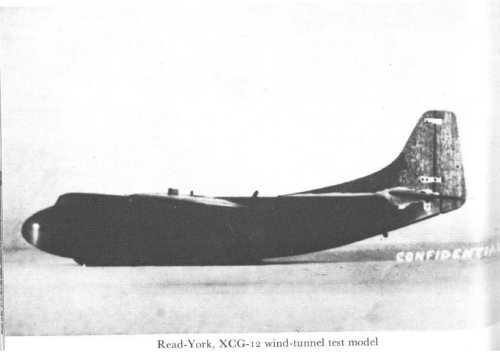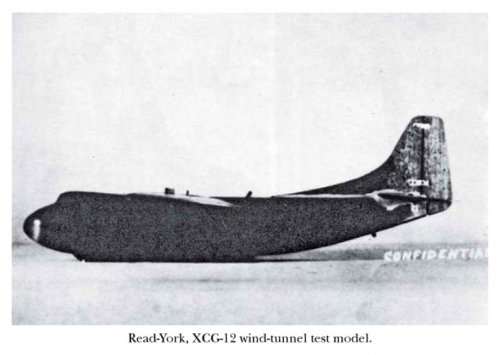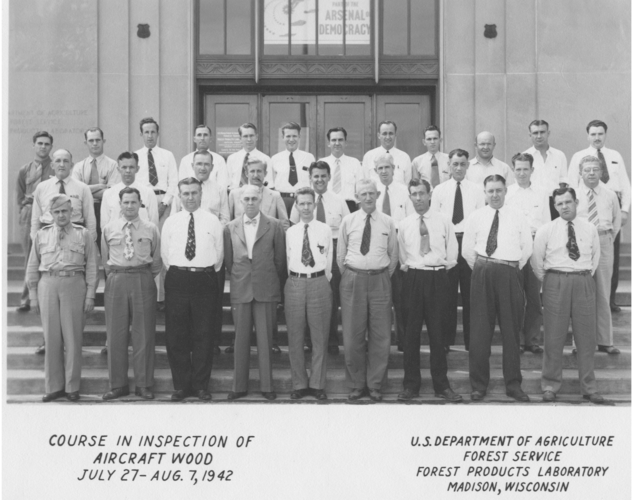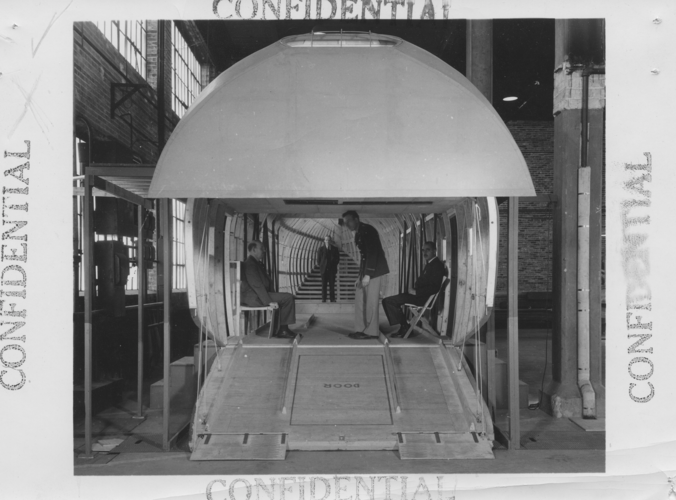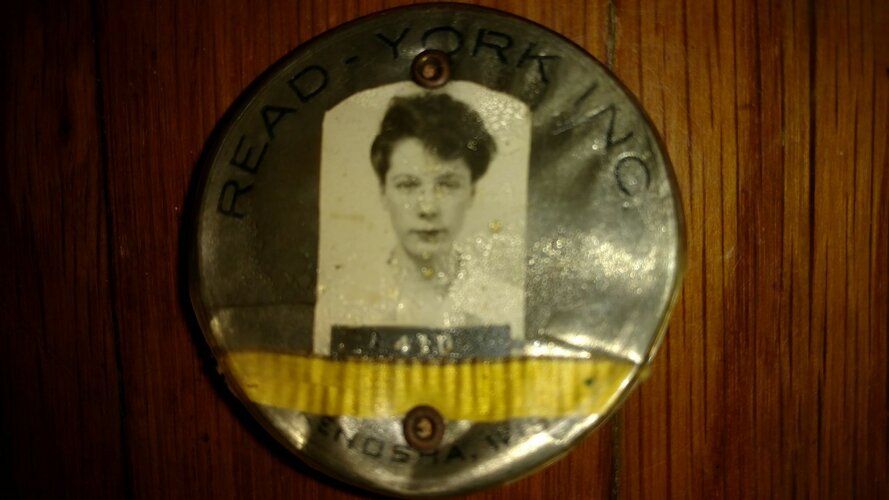You are using an out of date browser. It may not display this or other websites correctly.
You should upgrade or use an alternative browser.
You should upgrade or use an alternative browser.
Read-York XCG-12 Info wanted
- Thread starter hesham
- Start date
- Joined
- 25 June 2009
- Messages
- 13,793
- Reaction score
- 3,117
I have a different scan of exactly the same picture, and the only info I can find is this:
Read-York XCG-12-RD
proposed 30-place cargo glider
Not built
1944
One mention I have says it was a proposal to modify the XCG-11, but when I look at the Snead XCG-11 steel-tube and boom project, they seem to have nothing in common so it must be a typo.
Read-York XCG-12-RD
proposed 30-place cargo glider
Not built
1944
One mention I have says it was a proposal to modify the XCG-11, but when I look at the Snead XCG-11 steel-tube and boom project, they seem to have nothing in common so it must be a typo.
Attachments
- Joined
- 25 June 2009
- Messages
- 13,793
- Reaction score
- 3,117
A bit of investigation allows me to add some substantial information about the Read-York CG-12. Interesting bits I found was:
Under date of May 26, 1943, Read-York, Inc., New York, a firm incorporated for $100, secured a contract with the federal government for the manufacture of three 30-passenger gliders for the Army Air Force for the sum of $426,230. Funds for the performance of the contract were loaned and advanced by the federal government. Read-York, according to its articles of incorporation, was founded in June 1943, as a successor to York Aircraft Corp., which had engaged the Simmons Co. as a subcontractor in the building of experimental gliders. The officers were Holcomb York, president; Robert C. Read, executive vice-president, and Lincoln Epworth, secretary and treasurer.
For the purpose of conducting its operations under the contract, Read-York leased certain premises in Kenosha, Wisconsin, from the Simmons Manufacturing Company. However, the Simmons Co. allegedly refused to make further advances after it had already advanced a sum reported to be about $600,000. About October 16, 1943, Read-York ceased work on its contract and vacated the leased premises. One glider was manufactured but failed to meet the required tests, and the government thereafter terminated the contract. Certain property, including the property in dispute, was left in the Kenosha plant.
The termination of the contract was based upon the following findings of the contracting officer:
The appellant, however, took exception to such findings, and asserted:
A schedule of assets and liabilities was filed with the clerk of federal district court on August 22. Its schedules admitted liabilities in excess of $700,000 with assets consisting entirely of personal property of a market value probably not in excess of $5,000. The schedule listed unsecured creditors' claims of $202,228.23 against the firm, and no assets other than an uncompleted glider for which the Government, prior to the abandonment of the project by Read-York, had made progress payments upon its property in the amount of $333,359.40, under the provisions of Article 44 of the contract.
Selected sources:
- Date of contract AND manufacture was 1943, not 1944.
- Three aircraft ordered: two flying articles and one static test article. The latter was actually COMPLETED.
- The static test article was evaluated at Wright Field and found unsuitable.
- Wright Field issued some requests for changes and postponed the delivery date for the flying articles.
- Read-York was deep in debt and its subcontractor, Simmons, refused to proceed with the work.
- Read-York was declared bankrupt in June 1944.
- The Air Force reclaimed the sole prototype but what happened to it is unknown, though it must have been scrapped.
Under date of May 26, 1943, Read-York, Inc., New York, a firm incorporated for $100, secured a contract with the federal government for the manufacture of three 30-passenger gliders for the Army Air Force for the sum of $426,230. Funds for the performance of the contract were loaned and advanced by the federal government. Read-York, according to its articles of incorporation, was founded in June 1943, as a successor to York Aircraft Corp., which had engaged the Simmons Co. as a subcontractor in the building of experimental gliders. The officers were Holcomb York, president; Robert C. Read, executive vice-president, and Lincoln Epworth, secretary and treasurer.
For the purpose of conducting its operations under the contract, Read-York leased certain premises in Kenosha, Wisconsin, from the Simmons Manufacturing Company. However, the Simmons Co. allegedly refused to make further advances after it had already advanced a sum reported to be about $600,000. About October 16, 1943, Read-York ceased work on its contract and vacated the leased premises. One glider was manufactured but failed to meet the required tests, and the government thereafter terminated the contract. Certain property, including the property in dispute, was left in the Kenosha plant.
The termination of the contract was based upon the following findings of the contracting officer:
- Appellant failed to deliver the two flight test gliders.
- The structural test glider due to be delivered 10 July 1943 was not received until 27 July 1943.
- The structural test glider did not meet design specifications and could not be modified to meet any existing military requirements.
- (?)
- (?)
- Appellant stopped work under the contract 16 October 1943 and was unable to proceed.
- The delays in performance were not excusable delays under the contract or in law.
The appellant, however, took exception to such findings, and asserted:
- That the delivery date of the flight test gliders was extended to permit modifications requested by the Engineering Laboratory, Wright Field.
- That the delay in delivery of the structural test glider was inconsequential.
- That tests made of the structural test glider were not properly conducted and that this article did not, therefore, fail.
- That additional funds could and should have been made available to appellant, as the depletion of appellant's funds was in part due to the delay of the Government in completing the tests of the structural test glider.
- That it was understood that payment of appellant's obligation to York Aircraft Corporation was to be deferred until completion of the contract and final payment by the Government.
- That it was unable to proceed because of lack of funds and because of changes in requirements and specifications under consideration by the Engineering Laboratory.
A schedule of assets and liabilities was filed with the clerk of federal district court on August 22. Its schedules admitted liabilities in excess of $700,000 with assets consisting entirely of personal property of a market value probably not in excess of $5,000. The schedule listed unsecured creditors' claims of $202,228.23 against the firm, and no assets other than an uncompleted glider for which the Government, prior to the abandonment of the project by Read-York, had made progress payments upon its property in the amount of $333,359.40, under the provisions of Article 44 of the contract.
Selected sources:
- File Schedule of Glider Firm; Assets Are Near Nil. The Milwaukee Journal, Tuesday, August 22, 1944
- Glider Firm Woes Aired. The Milwaukee Journal, Tuesday, September 5, 1944
- IN RE READ-YORK No. 25136.
- IN RE READ-YORK Nos. 8768, 8769.
- The Federal reporter. Second series, Volume 152
- Air victory: the men and the machines - Page 199
- Termination of war contracts; Coordinators' Corporation, 1945, p. 460
Jos Heyman
ACCESS: Top Secret
- Joined
- 15 February 2007
- Messages
- 597
- Reaction score
- 57
Here is what I got:
Specifications:
span: 112’, 34.14 m
length: 70’, 21.34 m
max. speed: 150 mph, 241 km/h
The XCG‑12 was a 30 seat troop glider of which two were ordered on 24 September 1942 along with a static test airframe but cancelled on 5 November 1943 following wind tunnel tests with models. A static test article was delivered on 27 July 1943 but it failed structural tests.
Serials 42-68304/68305 have been associated with this designation.
The contract was initially given to the York Aircraft Corp., which had been established specifically for the construction of this aircraft design. The company was reconstituted as Read-York in May 1943.
There is a fascinating book American Military Gliders of World War II by Bill Norton that goes into all aspects of the glider program - worthwhile reading.
Specifications:
span: 112’, 34.14 m
length: 70’, 21.34 m
max. speed: 150 mph, 241 km/h
The XCG‑12 was a 30 seat troop glider of which two were ordered on 24 September 1942 along with a static test airframe but cancelled on 5 November 1943 following wind tunnel tests with models. A static test article was delivered on 27 July 1943 but it failed structural tests.
Serials 42-68304/68305 have been associated with this designation.
The contract was initially given to the York Aircraft Corp., which had been established specifically for the construction of this aircraft design. The company was reconstituted as Read-York in May 1943.
There is a fascinating book American Military Gliders of World War II by Bill Norton that goes into all aspects of the glider program - worthwhile reading.
- Joined
- 11 March 2012
- Messages
- 3,016
- Reaction score
- 2,698
www.usmilitaryaircraft.files.wordpress.com
Has a page on this un-built prototype.
Several companies (Czech, USA and USSR) proposed building more cargo gliders after WW2, but they were soon supplanted by helicopters.
Has a page on this un-built prototype.
Several companies (Czech, USA and USSR) proposed building more cargo gliders after WW2, but they were soon supplanted by helicopters.
- Joined
- 27 December 2005
- Messages
- 16,485
- Reaction score
- 19,253
From a lady whose father worked at Read-York. She has more photos of the aircraft but doesn't know where they are. The badge is her father's girlfriend who presumably also worked at Read-York while the group shot is from a course on 'wood for aircraft' her father attended.
Attachments
Last edited:
- Joined
- 13 June 2007
- Messages
- 2,031
- Reaction score
- 2,258
Thanks Paul - quite interesting. How did you come by this?From a lady whose father worked at Read-York. She has more photos of the aircraft but doesn't know where they are. The badge is her father's girlfriend who presumably also worked at Read-York while the group shot is from a course on 'wood for aircraft' her father attended.
Enjoy the Day! Mark
- Joined
- 27 December 2005
- Messages
- 16,485
- Reaction score
- 19,253
She contacted me directly via the site contact form.Thanks Paul - quite interesting. How did you come by this?From a lady whose father worked at Read-York. She has more photos of the aircraft but doesn't know where they are. The badge is her father's girlfriend who presumably also worked at Read-York while the group shot is from a course on 'wood for aircraft' her father attended.
Enjoy the Day! Mark
Similar threads
-
-
York XHC-22 Yorkopter VTOL Aircraft of 1956 ?
- Started by hesham
- Replies: 5
-
Bristol Type-137 Transport-Cargo Aircraft Project
- Started by hesham
- Replies: 1
-
-
Looking for infos about the MoskalyeV LT (SAM-23)
- Started by XB-35
- Replies: 2

